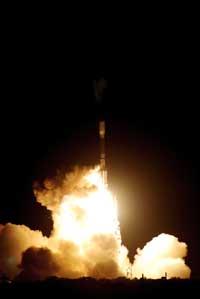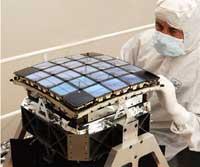Kepler in search of other Lands
Is there another planet where there is life? Or are we alone? NASA's Kepler probe may answer these questions of yesteryear. No planet like Earth has yet been found. With this objective, the Kepler probe was approximately a month ago from Cape Cañaveral, supported by the Delta II rocket.

Rocket launch with kepler probe, Delta II rocket. (NASA/Jack Pfaller)
The launch was spectacular, according to project director Kepler. The Kepler probe will observe the sky in the coming years in search of rocky planets of Earth-like characteristics. Among other things, he will look for planets that are at the right distance from their stars and therefore can have liquid water on their surface. Liquid water is considered essential for the development of life. However, attentive, without confusion: The goal of the Kepler probe is not to find life, but planets capable of developing. That is, you will not answer the question: is it alive outside the Earth? He will seek the answer to another question: Is there another habitable planet?
The Kepler probe will work for three and a half years in the search for planets capable of developing their lives around 100,000 sun-like stars. Experts hope to find hundreds of Earth-sized planets in our galaxy, the Milky Way. If Earth-like planets are in areas with conditions conducive to the development of life, that is, if these conditions allow the presence of liquid water, it is likely that the Kepler probe will find worlds like ours. However, if there are very few planets of this type, we may not find them.
Cutting-edge technology

The Kepler probe has a telescope designed specifically to detect stars with variable and periodic luminosity caused by the passage of the planets. In fact, if we look at some planets when they pass in front of their stars, this passage of the planets slightly reduces their luminosity or causes a certain gesture. Although it does not produce significant changes, the telescope is able to record those very small changes of luminosity.
Think that if the Kepler probe observed from space a small town on Earth, it would be able to detect the decrease in light from a portal during the night when a person passes. To achieve this feat, the Kepler probe will use the largest camera ever released into space. This camera includes 95 megapixels.

According to astronomers, the probe will initially only find giant gaseous planets, as they are to some extent easy to detect. NASA's Hubble and Spitzer telescopes will be able to follow these planets and learn the details of their atmospheres. Then it is possible to find planets of the size of Neptune. Within approximately three years you can begin to discover rocky planets like Earth and expect to find at least 50 during the mission. Subsequently, other probes must begin the work of checking the actual existence of life.
Astronomers are looking forward to the results of this project. But, as mentioned above, we must wait. Coincidentally, if a planet like Earth is not found, what would happen? Don't think it would be a failure. This “discovery” would also be very important. And maybe that would indicate that we are alone in our galaxy. And it is not little.
Published in 7k
Buletina
Bidali zure helbide elektronikoa eta jaso asteroko buletina zure sarrera-ontzian











